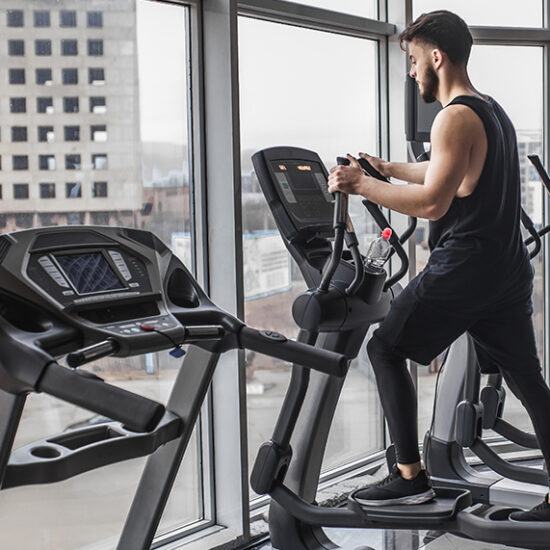Category: Maximizing Your Workout
Dos and Don’ts of Exercise: Maximizing Your Workout Safely and Effectively
Embarking on a fitness journey is an empowering endeavor, but it’s essential to approach exercise with knowledge and caution to prevent injury and optimize results. Whether you’re a seasoned athlete or a beginner, understanding the dos and don’ts of exercise can help you make the most of your workouts while staying safe and healthy. In this article, we’ll explore key guidelines to follow and common pitfalls to avoid during exercise sessions.
Dos of Exercise:
Warm-Up Properly: Always start your workout with a dynamic warm-up to prepare your body for exercise. Incorporate movements that target the muscles and joints you’ll be using during your workout, such as arm circles, leg swings, and torso twists. Warming up increases blood flow to the muscles, improves flexibility, and reduces the risk of injury.
Listen to Your Body: Pay attention to how your body feels during exercise and adjust your intensity or technique accordingly. Push yourself to challenge your limits, but avoid pushing through pain or discomfort that could indicate injury. Honor your body’s signals and modify exercises as needed to ensure a safe and effective workout.
Focus on Form: Proper form is essential for maximizing the effectiveness of your workouts and preventing injury. Take the time to learn correct exercise techniques and focus on maintaining good form throughout each repetition. Engage the appropriate muscles, keep your movements controlled and deliberate, and avoid using momentum to cheat through exercises.
Stay Hydrated: Hydration is key to maintaining optimal performance and preventing dehydration during exercise. Drink water before, during, and after your workout to replenish fluids lost through sweat. Pay attention to your body’s thirst signals and sip water regularly to stay hydrated throughout your workout session.
Incorporate Variety: To prevent boredom and plateaus, vary your exercise routine by incorporating a mix of cardio, strength training, flexibility, and balance exercises. Experiment with different workout formats, equipment, and exercise modalities to keep your workouts interesting and challenging. Cross-training also helps prevent overuse injuries by giving different muscle groups a chance to recover.
Don’ts of Exercise:
Don’t Skip the Cool Down: Just as warming up is essential, so is cooling down after a workout. Gradually decrease the intensity of your exercise and incorporate stretching to help reduce muscle soreness and improve flexibility. Spend 5-10 minutes stretching major muscle groups, holding each stretch for 15-30 seconds without bouncing.
Avoid Overtraining: While consistency is key to progress, overtraining can lead to burnout, fatigue, and increased risk of injury. Give your body time to rest and recover between workouts, and vary the intensity and duration of your exercise sessions to prevent overuse injuries. Listen to your body’s signals of fatigue and prioritize rest when needed.
Don’t Neglect Nutrition: Proper nutrition is essential for supporting your body’s energy needs during exercise and promoting recovery afterward. Fuel your workouts with a balanced diet rich in lean proteins, complex carbohydrates, healthy fats, and plenty of fruits and vegetables. Avoid exercising on an empty stomach and refuel with a combination of protein and carbohydrates post-workout to support muscle repair and glycogen replenishment.
Avoid Excessive Cardio: While cardiovascular exercise is important for heart health and calorie burning, too much cardio can lead to muscle loss and overtraining. Balance your cardio workouts with strength training to maintain muscle mass, boost metabolism, and improve overall body composition. Aim for a mix of both high-intensity and moderate-intensity cardio sessions for optimal results.
Don’t Compare Yourself to Others: Everyone’s fitness journey is unique, and progress looks different for each individual. Avoid comparing yourself to others and focus on your own goals, achievements, and improvements. Celebrate your successes no matter how small and trust in the process of consistent effort and dedication to reach your fitness aspirations.
In conclusion, by following these dos and don’ts of exercise, you can maximize the effectiveness of your workouts while minimizing the risk of injury and burnout. Remember to warm up properly, listen to your body, focus on form, stay hydrated, and incorporate variety into your routine. Avoid skipping the cool down, overtraining, neglecting nutrition, excessive cardio, and comparing yourself to others. With a balanced approach to exercise and a commitment to self-care, you can achieve your fitness goals safely and effectively.
Maximizing Your Treadmill Workouts: The Ultimate Guide to Effective Training
In the realm of indoor cardio equipment, the treadmill reigns supreme as a versatile and efficient tool for achieving fitness goals. Whether you’re a seasoned athlete or just starting your fitness journey, the treadmill offers a wide range of training options to suit every need. From fat burning to interval training and endurance building, here’s a comprehensive guide to the best workouts to do on treadmills.
Interval Training: Also known as HIIT (High-Intensity Interval Training), this workout alternates between short bursts of high-intensity effort and periods of low-intensity recovery. HIIT is incredibly effective for burning calories and improving cardiovascular fitness in a short amount of time. Try alternating between sprinting at maximum effort for 30 seconds and walking or jogging for 60 seconds. Repeat this cycle for 15-20 minutes for a quick and intense workout.
Incline Workouts: Incorporating incline into your treadmill routine can help simulate outdoor terrain and increase the intensity of your workout. Walking or running uphill engages different muscle groups and burns more calories compared to exercising on a flat surface. Start with a moderate incline and gradually increase the intensity as you build strength and endurance. Aim for a mix of steady incline workouts and interval sessions to challenge your body and prevent plateauing.
Long-Distance Runs: Treadmills are perfect for long-distance training, allowing you to control speed and incline to simulate outdoor conditions. Whether you’re training for a marathon or simply aiming to improve your endurance, incorporating regular long runs into your treadmill routine is essential. Start at a comfortable pace and gradually increase the duration of your runs over time. Experiment with different speeds and inclines to keep your workouts challenging and engaging.
Speed Workouts: If you’re looking to improve your running speed and agility, speed workouts on the treadmill are highly effective. Interval training at varying speeds can help increase your anaerobic threshold and boost your overall speed. Try alternating between short bursts of sprinting at maximum effort and periods of recovery at a slower pace. Incorporating speed workouts into your routine 1-2 times per week can lead to significant improvements in your running performance.
Hill Repeats: Similar to outdoor hill training, hill repeats on the treadmill are an excellent way to build strength and power in your legs. Set the incline to a challenging level and sprint uphill for a short duration (e.g., 30-60 seconds), followed by a recovery period at a lower incline or flat surface. Repeat this cycle for several rounds, focusing on maintaining good form and powerful strides. Hill repeats are particularly beneficial for improving leg strength, endurance, and running economy.
Walking Workouts: Don’t underestimate the power of walking on the treadmill for low-impact cardio and calorie burning. Walking at a brisk pace or at an incline can provide an effective cardiovascular workout without putting excessive stress on your joints. Incorporate walking workouts into your routine on days when you need a break from high-intensity training or as part of your active recovery days.
Cross-Training: In addition to traditional running and walking workouts, treadmills can also be used for cross-training activities such as walking lunges, side shuffles, and high knees. Incorporating these dynamic movements into your treadmill routine helps improve overall strength, balance, and agility while adding variety to your workouts. Experiment with different cross-training exercises to target different muscle groups and keep your workouts fun and engaging.
Progressive Workouts: To continually challenge yourself and avoid hitting a plateau, it’s essential to incorporate progressive overload into your treadmill workouts. This involves gradually increasing the intensity, duration, or difficulty of your workouts over time. Whether it’s adding an extra minute to your interval sessions, increasing the incline by a few percentage points, or aiming for a faster pace, strive to push your limits and progress towards your fitness goals.
In conclusion, treadmills offer a multitude of training options to suit every fitness level and goal. Whether you’re aiming to improve your cardiovascular endurance, increase your running speed, or burn calories efficiently, there’s a treadmill workout for you. Experiment with different training modalities, mix up your routine regularly, and listen to your body to optimize your treadmill workouts and achieve maximum results. Remember to stay hydrated, warm up properly before each session, and cool down afterward to prevent injury and promote recovery. With dedication and consistency, you can take your fitness to new heights with treadmill training.


